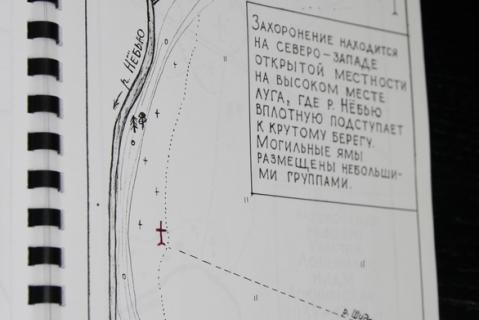The Shudog labour settlement for dekulakized peasant families came into being in 1931. It became a division of Lokchimlag during that camp system’s existence, 1937-1940. Subsequently, the empty barracks were used to accommodate deportees of various nationalities in the 1940s. The graveyard was in an open site, on the high bank of the river. The numbers of men, women and children buried there has not been established, only a few names of male prisoners from Lokchimlag who died in Shudog are known. In 1974, the settlement was no longer registered.
In July 2002, the graveyard was studied by an expedition from the Kortkeross Centre for Children’s Extracurricular Education (director A.A. Smilingis) and a plan of the burials was drawn up. On 26 July 2002, the expedition members erected a commemorative cross there.
The Memorial online database (2025) lists 129,473 victims in the Komi Republic. (See Nizhny Chov.)
Among them were over 64,000 deportees sent to or born in the Republic. During collectivisation (1929-35) they numbered 20,366, a quarter of whom were aged 1-10. In 1940 there was a massive influx from occupied Polish territory (19,367). More, mainly Germans (5,970) were sent in the 1940s and 1950s (6,699).
The database names almost 55,000 sent to the camps in Komi, where over 10,000 died: half were convicted in 1936-1940, including 7,977 who died in the camps.
Drawing on the Komi Book of Remembrance and other sources, the database lists 26 Lokchimlag inmates, one of whom was again imprisoned in 1937 and nine others who died in the camps between 1940 and 1943.
| State of burials | Area | Boundaries |
|---|---|---|
|
subsidence over burials, distributed in small groups
|
not established
|
not delineated
|
[ Original texts & hyperlinks ]
Kortkeross Centre for Schoolchildren’s Extracurricular Education (2001, 2002, 2006, 2008 local history expeditions) – Pokayanie Foundation Archive (Syktyvkar)
“Shudog settlement. Forced settlers and Lokchimlag prisoners’ graveyard”, Virtual Museum of the Gulag [retrieved, 26 May 2022; no longer accessible]

